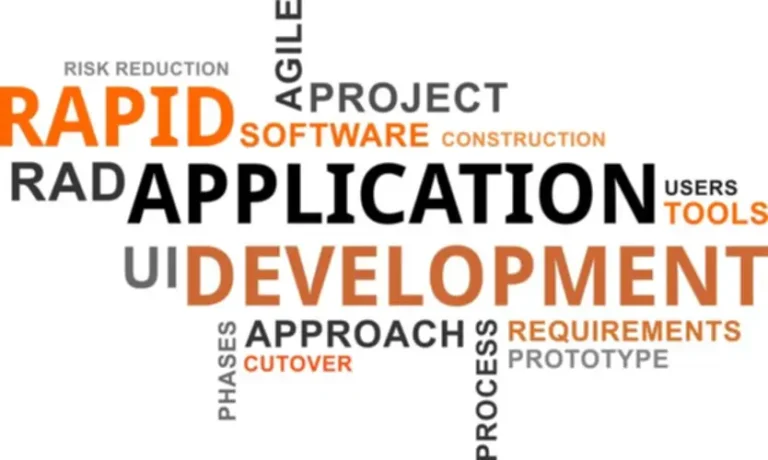Whereas both PostgreSQL and MongoDB make amazing databases, it ultimately comes down to picking what’s right https://www.globalcloudteam.com/ for your small business. The translation of SQL to MongoDB queries may take extra time to use the engine which may delay the deployment and development. MongoDB tends to give attention to fast knowledge operation however lacks the info safety that PostgreSQL seems to own. It’s fairly tasking on the memory, because the denormalization course of usually leads to excessive reminiscence consumption. MongoDB Atlas performs the identical means throughout the three largest cloud providers, making migration between a number of clouds easier.
Since these constraints disallow any actions that take away hyperlinks from one table to a different and may cease the insertion of invalid knowledge into foreign key columns, this can be a essential function for some customers. PostgreSQL’s support for SQL-based querying, including joins and superior aggregation capabilities, is advantageous when your application wants complex reporting, knowledge analysis, and business intelligence capabilities. MongoDB is well-liked saas integration among builders as a end result of its versatile schema and use of JSON-like paperwork. It aligns properly with trendy utility development practices, making it an attractive choice for agile growth teams. Indexes are a sort of data construction that can retailer a minimal amount of information in an easily readable type.
Mongodb Vs Postgresql: Choosing The Right Database For Your Project
It makes queries execute quicker as it’s in a serialization format that successfully archives JSON-like paperwork. The essential thing to notice here is that transactions enable varied adjustments to a database to both be made or rolled back in a group. Subsequently, in a relational database, the info would be modeled across unbiased parent-child tables in a tabular schema. Relational databases are great at running complicated queries and data-based reporting in cases where the data structure doesn’t change incessantly. Open-source databases like PostgreSQL supply an economical various as a steady production-grade database compared to its licensed contemporaries like SQL Server and Oracle. MongoDB and PostgreSQL are both top-rated database methods but they serve completely different functions.
However, MongoDB is often utilized in techniques that favor eventual consistency over strict ACID compliance, which works nicely for applications that may tolerate slight delays in consistency. MongoDB is a doc database that shops information as key-value pairs in JSON documents. Every document can maintain varied kinds of information, together with arrays, Booleans, numbers, strings, and nested paperwork.
If your enterprise requires executing complicated and voluminous queries, the most effective answer is the relational database PostgreSQL. It works with numerous third-party purposes, simplifying its usage in corporate infrastructure. MongoDB is a document-oriented database that stores information within the type of JSON-like paperwork in collections with nested fields and arrays. It is open-source and designed to work with unstructured and semi-structured data. The choice of MongoDB vs. PostgreSQL is pushed by your project’s necessities, together with information construction, scalability wants, query complexity, and transactional consistency. In some cases, hybrid solutions that mix the strengths of each databases may be the best approach.

Beyond easy indexing, MongoDB’s aggregation framework is another powerful software. The aggregation pipeline allows you to process and transform paperwork in levels, much like a collection of Unix pipes. This is particularly helpful for batch processing, information transformations, and complex reporting.
Partitioning And Sharding
Nonetheless, unlike MongoDB’s sharding, PostgreSQL replication focuses extra on scaling learn operations quite than distributing write loads across multiple servers. PostgreSQL, in distinction, is traditionally designed for vertical scalability, which means that it excels at dealing with massive datasets on a single, highly effective machine. PostgreSQL is highly environment friendly when dealing with complex queries and huge quantities of structured knowledge, thanks to its sturdy question planner, indexing capabilities, and help for parallel query execution. MongoDB, however, is the cool, relatively new child on the block, though it’s been around since 2009. Created by developers at 10gen (now MongoDB, Inc.), MongoDB was designed to break free from the inflexible structures of traditional relational databases. It’s ACID-compliant, meaning it ensures the reliability of transactions which is an enormous deal when you’re engaged on monetary purposes, ecommerce platforms, or any system that requires data integrity.

In addition to this detailed comparability, the article addresses incessantly asked questions (FAQs), offering additional insights and clarity on database selection. MongoDB has a rich set of data types which embody String, Numeric, Boolean, Min/Max keys, Arrays, Timestamps, Object, Null, Symbol, Date, Object ID, Binary, Code, and Regular Expression. In comparability, the utmost BSON doc dimension is 16 megabytes in MongoDB, and in PostgreSQL the utmost row dimension is 1.6 terabytes.
- PostgreSQL, in contrast, is historically designed for vertical scalability, meaning that it excels at handling giant datasets on a single, highly effective machine.
- MongoDB Atlas automates replication and failover, making certain that the system stays operational even throughout outages, with knowledge replicated throughout a number of regions for catastrophe restoration.
- Normalized information models describe relationships using references between paperwork.
- This whole process doesn’t require complicated code, so you’ll be able to move data to the database of your selection with none knowledge engineering experience.
In PostgreSQL, you possibly can outline relationships between tables utilizing overseas keys. Using this method, you presumably can perform complicated joins and type relationships between tables. This perform is very useful when you question information across a number of tables, utilizing the relationships you define to attach knowledge sets. If an operation includes completely different entities, MongoDB is usuallyfaster as a end result of data is de-normalized and doesn’t require pricey joins between tables. On the other hand, Postgresis more able to dealing with advanced queries due to SQL and its sophisticated question optimizer.

Transactions are processed safely and reliably, allowing a complete transaction to fail instead of executing a write that partially succeeded. Data may be distributed throughout totally different regions with ease via the MongoDB Atlas cloud service. You also can choose to continuously retailer them in particular areas or international areas to ensure decreased latency. Any errors would trigger the update operation to roll back, reversing the change and ensuring that the purchasers get a constant view of the doc. PostgreSQL also carries no licensing cost, eliminating the danger of over-deployment. Its devoted group of fanatics and contributors often find bugs and options, chipping in for the general safety of the database system.
Nonetheless, it may require more careful planning and management for very massive datasets in comparability with MongoDB, particularly when it comes to horizontal scaling. In contrast, PostgreSQL is an object-relational database administration system (ORDBMS) that mixes object-oriented options with relational database capabilities. In a desk, each row represents particular person data factors, and every column defines the type of information that you retailer there. PostgreSQL supports a range of information varieties, together with dates, text, integers, and Booleans. PostgreSQL makes use of the relational database mannequin that is decided by storing knowledge within tables and utilizing the structured question language (SQL) for database access. It has a big object facility, which supplies stream-style entry to user knowledge that is saved in a particular large-object construction.
MongoDB offers Role-Based Access Control (RBAC), which restricts entry to the database based mostly on predefined roles. PostgreSQL can handle some NoSQL features (like JSON), but MongoDB is designed for unstructured, flexible data, which PostgreSQL doesn’t deal with as natively. MongoDB’s schema-less nature allows for quick prototyping and iteration through the early phases of application improvement when knowledge fashions are nonetheless evolving. If your utility entails geospatial information, MongoDB’s native help for geospatial indexing and queries can simplify location-based providers and mapping functions. Invoice has over 25 years of experience working in numerous software program roles related to full stack improvement including consumer interface, middleware, databases (RDBMS and NoSQL), security, DevOps, coaching, and mentorship.
It assumes there aren’t any conflicts between most concurrency write operations, which permits folks to change knowledge on the identical time without buying locks. It also creates a new revision ID for the doc postgres vs mongo, which allows a number of documents with the identical data to exist simultaneously. MongoDB and PostgreSQL are different types of databases which have distinct knowledge models. It adopts relational mannequin, provides comprehensive SQL functionality, carries an extensible structure, and is driven by an enthusiastic neighborhood. Postgres has an extensible structure and continues to be maintained by the neighborhood.
PostgreSQL presents sturdy logging and auditing capabilities, allowing for monitoring of all database exercise. Tools just like the pgAudit extension provide detailed logging, guaranteeing compliance with laws like GDPR, HIPAA, and PCI-DSS. Prior to model 4.zero, MongoDB didn’t support multi-document transactions, so atomicity was restricted to operations on particular person paperwork. However, with the release of MongoDB four.0, full ACID transactions were introduced, permitting a number of documents throughout a number of collections to be up to date as part of a single transaction.
